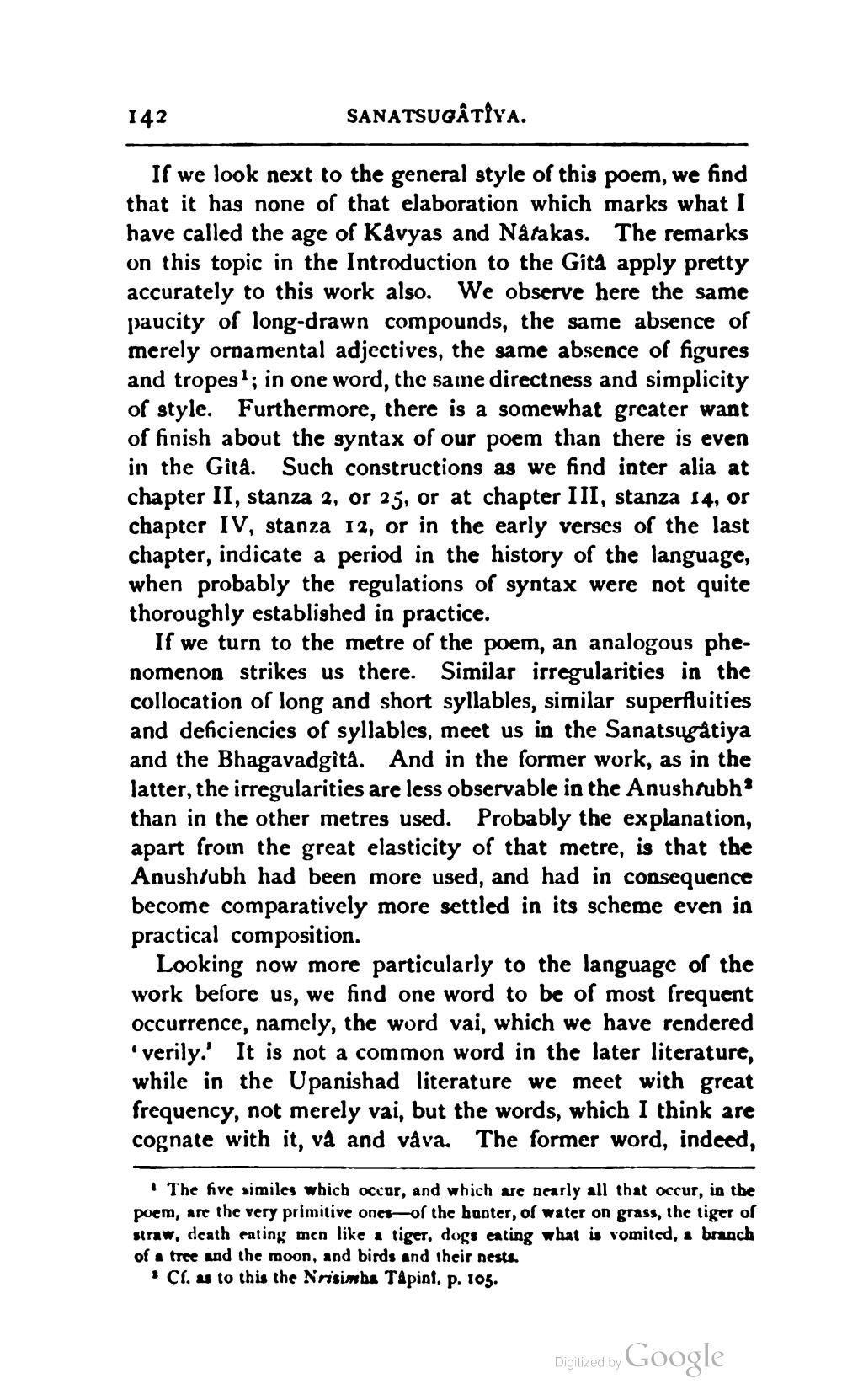________________
142
SANATSUGÂTIYA.
If we look next to the general style of this poem, we find that it has none of that elaboration which marks what I have called the age of Kavyas and Natakas. The remarks on this topic in the Introduction to the Gita apply pretty accurately to this work also. We observe here the same paucity of long-drawn compounds, the same absence of merely ornamental adjectives, the same absence of figures and tropes; in one word, the same directness and simplicity of style. Furthermore, there is a somewhat greater want of finish about the syntax of our poem than there is even in the Gita. Such constructions as we find inter alia at chapter II, stanza 2, or 25, or at chapter III, stanza 14, or chapter IV, stanza 12, or in the early verses of the last chapter, indicate a period in the history of the language, when probably the regulations of syntax were not quite thoroughly established in practice.
If we turn to the metre of the poem, an analogous phenomenon strikes us there. Similar irregularities in the collocation of long and short syllables, similar superfluities and deficiencies of syllables, meet us in the Sanatsygåtiya and the Bhagavadgita. And in the former work, as in the latter, the irregularities are less observable in the Anushrubh' than in the other metres used. Probably the explanation, apart from the great elasticity of that metre, is that the Anushrubh had been more used, and had in consequence become comparatively more settled in its scheme even in practical composition.
Looking now more particularly to the language of the work before us, we find one word to be of most frequent occurrence, namely, the word vai, which we have rendered
verily. It is not a common word in the later literature, while in the Upanishad literature we meet with great frequency, not merely vai, but the words, which I think are cognate with it, va and våva. The former word, indeed,
"The five similes which occor, and which are nearly all that occur, in the poem, are the very primitive ones of the banter, of water on grass, the tiger of straw, death eating men like a tiger, dogs eating what is vomited, a branch of a tree and the moon, and birds and their nests.
i Cl. us to this the Nrisimba Tipini, p. 105.
Digitized by Google




